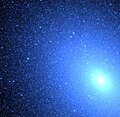Αρχείο:Utraviolet Light Source in an Old Galaxy (9464531619).jpg

Μέγεθος αυτής της προεπισκόπησης: 617 × 600 εικονοστοιχεία . Άλλες αναλύσεις: 247 × 240 εικονοστοιχεία | 494 × 480 εικονοστοιχεία | 790 × 768 εικονοστοιχεία | 1.159 × 1.127 εικονοστοιχεία.
Εικόνα σε υψηλότερη ανάλυση (1.159 × 1.127 εικονοστοιχεία, μέγεθος αρχείου: 1,72 MB, τύπος MIME: image/jpeg)
Ιστορικό αρχείου
Κλικάρετε σε μια ημερομηνία/ώρα για να δείτε το αρχείο όπως εμφανιζόταν εκείνη τη στιγμή.
| Ώρα/Ημερομ. | Μικρογραφία | Διαστάσεις | Χρήστης | Σχόλια | |
|---|---|---|---|---|---|
| τελευταία | 13:37, 27 Σεπτεμβρίου 2015 |  | 1.159 × 1.127 (1,72 MB) | Sumita Roy Dutta | Transferred from Flickr via Flickr2Commons |
Συνδέσεις αρχείου
Τα παρακάτω λήμματα συνδέουν σε αυτό το αρχείο:
Καθολική χρήση αρχείου
Τα ακόλουθα άλλα wiki χρησιμοποιούν αυτό το αρχείο:
- Χρήση σε af.wikipedia.org
- Χρήση σε ar.wikipedia.org
- Χρήση σε de.wikipedia.org
- Χρήση σε fr.wikipedia.org
- Χρήση σε he.wikipedia.org
- Χρήση σε id.wikipedia.org
- Χρήση σε it.wikipedia.org
- Χρήση σε lb.wikipedia.org
- Χρήση σε mk.wikipedia.org
- Χρήση σε nds.wikipedia.org
- Χρήση σε pl.wikipedia.org
- Χρήση σε pt.wikipedia.org
- Χρήση σε ro.wikipedia.org
- Χρήση σε si.wikipedia.org
- Χρήση σε uk.wikipedia.org